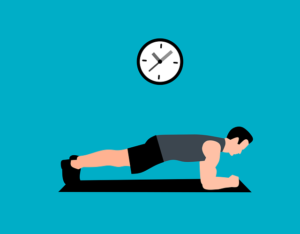 Fitness should never be taken for granted. People are inclined to follow the latest fad in hopes of shedding a few pounds. However, if they do not make wholesale changes, they are likely to gain weight again.
Fitness should never be taken for granted. People are inclined to follow the latest fad in hopes of shedding a few pounds. However, if they do not make wholesale changes, they are likely to gain weight again.
A better formula to follow is to improve your lifestyle. Ideally, this includes a good diet and reasonable exercise. While an adequate exercise regime is vital and can help reduce the risk of illness, the importance of a proper diet cannot be overstated.
“Abs are made in the kitchen” is a quotation you may have either read somewhere or heard if you’ve ever been to the gym or spoken to a fitness guru. The crux of this quote is that a diet is supremely significant, perhaps even more so than exercise.
Nevertheless, we can compare mainstream diet plans to decide if they are actually worth your time.
Atkins
 The concept of dieting is defined as a routine where you monitor and control what you eat in order to lose, gain or maintain your weight. You can set yourself targets in terms of potential weight and eat accordingly.
The concept of dieting is defined as a routine where you monitor and control what you eat in order to lose, gain or maintain your weight. You can set yourself targets in terms of potential weight and eat accordingly.
Before we proceed, we need to understand that in nutrition, there are three main classes: carbohydrates, protein, and fat. Each of these can be discussed in detail but it is immaterial to the differences.
One popular diet ‘plan’ is Atkins. Coined by Doctor Robert Atkins in the 1960’s, it involves a meal plan that is heavy on proteins and fat but contains virtually no carbohydrates. The basic idea is to consume greater quantities of the first two, which will help you avoid carbohydrates. It is expected that this will diminish your appetite over time.

The Atkins diet is divided into four phases. The primary step also called the induction stage, is to set a limit and consume only 20 grams of carbohydrates in a day. On the other hand, you must increase the quantities of protein you eat. Protein-rich foods include red meat, fish, and eggs. Fats included in the plan include dairy products like milk. However, starch-heavy foods, nuts, and caffeine are all prohibited.
You must adhere to these principles for at least two weeks. Achieving this target helps to lose weight faster since the body is subjected to an abrupt adjustment. The other three phases involve gradually reintroducing carbohydrates back into your diet once you are close to your expected weight. You can expect to shed up to 15 pounds in the first two weeks and four to six pounds in the following phases.
One of the benefits of Atkins is that it keeps you motivated early on since the initial weight loss is significant. This encourages a person to remain disciplined in his/her approach. The diet also cuts your intake of processed food, which is better for your health. It can also reduce the risk factor for developing diseases like cholesterol, sugar, and blood pressure.
Potential disadvantages are that it may cause fatigue and headaches. It will reduce the amount of fiber in your body as well as decrease your calcium levels.
Paleo

Our hunting ancestors were reliant on anything they could catch and make with their bare hands, for instance, meat, fish, fruits, and nuts. Alternatively, this also means processed meats; wheat, dairy, and sugar are off the menu.
This method is generally regarded as being high on proteins and low on carbohydrates. Since there is no fixed plan, variations can be made to include a greater quantity of carbohydrates.
Omitting processed meals from your diet means a reduction in your calorie intake, which immediately helps in losing weight. The diet includes more foods that have ample nutritional value. If you abide by the Paleo diet, it will allow more flexibility since users generally follow an 80/20 rule, where they should follow the diet eighty percent of the time.
Moreover, there are no fixed meal plans, since the diet of cavemen was never accurately recorded. Paleo is not ideal for vegetarians since it has high portions of meat. Dairy products like milk are essential parts of a balanced diet but this plan discourages their consumption.
Dukan
Named after its creator, a French doctor named Pierre Dukan is another low carbohydrate and high protein diet. Like Atkins, this is also split into four stages.
Phase one, which is known as the attack phase, lasts for ten days when followers must consume lean proteins from a premeditated list. A small intake of oat bran and a minimum of six glasses of water is obligatory. However, unlike Atkins, the Dukan diet bans vegetables outright and narrows fat intake in the first stage.
The remaining three steps are called cruise, consolidation, and stabilization respectively. How long you stay in each will depend on how much weight you intend to lose.
Users’ weight level drops quickly like Atkins, which can encourage them to carry on. Dukan is easy to follow and there is no need to count calories. Additionally, a vast number of foods are permitted, especially in the first phase of Dukan.
On the other end of the spectrum, it can be hard to sustain the diet since it causes exhaustion and nausea since you are cutting a majority of carbohydrates, which means the body may need time to adjust.
Weight Watchers
This plan is based on an exchange or points system called SmartPoints. Foods are assigned points value and carbohydrates, proteins, and fats are factored in.
Weight Watchers is basically a calorie control measure where no limitations are placed on followers, as long as they remain below the point threshold determined by the system. The process is more thorough as meetings and weigh-ins are scheduled regularly. The diet can help you lose about two lbs a week.
The advantage of Weight Watchers is that no food is banned, which means no great adjustment needs to be made. The plan is not restrictive and advocates balance. The concept of safety net points means you can make exceptions and indulge in your favorite food without guilt.
The drawbacks of the diet are that in the beginning, understanding and following the points system can be as taxing as counting calories. People may be unable to attend frequent meetings as well. Also, Weight Watcher branded foods are suggested, which are more expensive than other value brands.
A Mixed Approach to Losing Weight
You might want to consider a holistic approach. This plan involves the discipline of the mind and body and is usually managed by a doctor or nutritional professional. Many people have succeeded in using this plan. You can learn more about holistic medicine here.
In conclusion, it is obvious that every diet plan has its benefits and shortcomings. A significant aspect of such plans is that excessive weight is lost in the short term, but if you’re not careful in the long term, you may regain it. Therefore, above all, a healthy and balanced lifestyle is encouraged.
How About DIY – Do It Yourself?
An alternative to all of the above is DIY. All it takes is a schedule of healthy foods to eat each day, exercise, and the proper discipline and you’re in! Follow these steps to ensure you’re on the right track!
The Case of the 67-Year-Old Man
Breakfast
Lunch
This is where the weight loss plan really takes the punch. The man used to have big lunches. Cheeseburgers he would make at home or high-calorie frozen dinners and sometimes, he would go out to a fast food restaurant or the local pizza shop. Not to mention he included a glass of soda with every meal!
Now that all stopped. He currently has a light meal consisting of some tuna with a vegetable salad he would make himself or with friends or just a nutrition bar or equivalent. And to drink, just water.

Dinner
Late Night Snacks
Exercise

The man would exercise daily, but not extreme or even heavy exercising. He would simply walk around the block at a pace just above simple walking. Other times he would go to the mall and walk around, taking the stairs to go to other floors.
He also came up with a unique exercise. Since he is retired, he would pick up his nine-pound Maltese and walk with her around the house, as well as go up and down the stairs a few times.
He would do all or any of these routines for about 15-20 minutes or until he would feel his heartbeat increase, then work out a little more and then stop. He stops not because he has a heart condition, but because he knows that that’s when his metabolism is working at its best; however, he doesn’t want to overdo it due to his age. Of course, younger people could exercise longer if they choose.
Case Conclusion
The bottom line is that this person stopped eating those high-calorie meals and drinks, specifically, avoiding high-calorie meals for breakfast and lunch and sometimes for dinner. Avoided soda at all costs and drank water instead – he also increased his water consumption by three-fold.
He also exercised and made sure he had the required eight hours of sleep.
The result – He began losing between 1/4 – 1/2 pounds per day and is currently weighing 179 lbs just after four weeks. He believes that the weight loss is disproportional, meaning that he has been losing more because he is not eating high-calorie foods and drinks and less because he is eating the right foods, but he also knows that both are important!
The man has a simple expression for his weight loss:
“It’s not about what you eat, it’s about what you don’t eat!”
Note: The above true scenario is working for this gentleman, but might not work for everyone, as each person’s health condition, metabolism and age should be taken into account. It is best to talk to your medical professional if you are going to change your diet and/or exercise to be on the safe side.
Summary
Of course, there’s no guarantee that any of these will work if there are other factors involved with your physical or mental health; such as, if you are pregnant, elderly, or have an immune deficiency disorder. In cases such as these, you should consult with your doctor before proceeding.
Whatever diet you choose, any of them are worth the try and many people swear by them, so get your diet shows on and start running!
